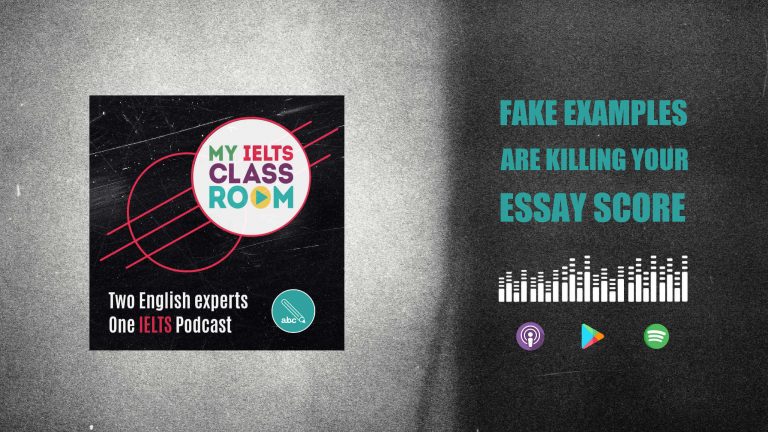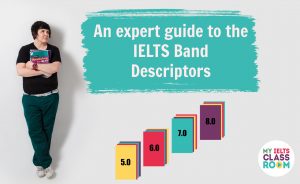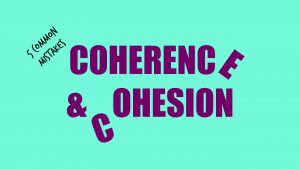
3 reasons why you should NEVER use fake examples in IELTS essays
3 reasons why you should NEVER use fake examples in IELTS essays
Did you know that recent research at Cambridge University has shown that 100% of My IELTS Classroom students are satisfied with their course? I know – it surprised me too! What surprises me more, however, is that students continue to use fake examples in IELTS essays to “support” their ideas. I cannot express strongly enough how depressed this makes me feel. So, in today’s episode, I want to present my case as to why inventing fake statistics is pointless at best, and damaging to your writing score at worst.
Below, you can find a summary of the episode, which includes all of the links to useful materials and the times of each part of the discussion (so you can go directly to the part you want to listen to) 🚀
Subscribe to My IELTS Classroom podcast on Apple podcasts here
Subscribe to My IELTS Classroom on Google podcasts here
Podcast Summary: 3 reasons why you should NEVER use fake examples in IELTS essays
00:00 – 09:33 – Introduction: Language to show annoyance
I try to be a calm and patient person, but when students use fake examples in their essays, I find myself becoming really annoyed. Just to be clear. I am not angry with the students. I am angry with the person who told them how to do this. At the start of today’s podcast, Nick and I discuss other things that make us annoyed, and show you how to use these GREAT expressions to express you irritation:
- It gets on my nerves when ….
- It does my head in when ….
- It winds me up when ……
- It drives me nuts when ….
- X really gets my goat ….
- X really grinds my gears …..
09:34 – 12:25 – Why inventing fake examples in IELTS essays is a bad idea: Introduction
Throughout the rest of the episode, I want to present arguments to show you why using fake examples in your IELTS essay is a bad idea. What do I mean by “fake examples”? I mean examples that pretend to cite evidence from research at a specific university and which contain fake statistics. Let me give you an example of a fake example!
For example, a recent study at Cambridge University shows that 99% of good IELTS teachers are annoyed by the use of fake statistics.
Now, I think that these are the absolute OPPOSITE of what writing examiners are looking for when they mark your paper and can sometimes have a very negative impact on your score. However, I want to make it very clear that using these examples will not automatically mean that you get a low score. My argument is that these examples do NOTHING to help you get a high score.
This is a very important distinction. Is it possible that one of your friends used a fake example in their test and got a high score? Sure. My point is that the fake example did nothing to help them get their score. Worse, for many students, these examples actively damage their scores for TR and CC. Let’s find out why!
Want to know how the examiner will apply the band descriptors when marking your IELTS essay?
Then download a copy of our FREE e-book, which explains how each of the four marking criteria is applied and includes the most common errors made by test-takers. Just click here for your copy.

12:26 – 16:36 – 1st Reason why inventing fake examples in IELTS essays is a bad idea: No reputable IELTS Book teaches you to do this
Over the last 15 years, I have used IELTS books published by all of the reputable publishing companies. What do I mean by reputable? Any published by Cambridge, Oxford, Pearson, or Collins. This is important. There are many self-published books available online, but not all of them contain information that you can trust. Here is a small selection of the books that I have used and can recommend:
- Cambridge:Objective IELTS, New Insight Into IELTS, Instant IELTS, The Official Guide to IELTS, Vocabulary for IELTS, Grammar for IELTS
- Oxford: IELTS Masterclass
- Pearson: Focus on IELTS, Oshima and Hogue: Writing Academic English
- Collins: Writing for IELTS
All of these books have their strengths and weaknesses, but I can tell you with absolute certainty that
NONE OF THESE BOOKS TEACH YOU TO CREATE FAKE EXAMPLES IN YOUR IELTS ESSAYS
Don’t you think that this is strange? I mean, if this is what the examiners are looking for, don’t you think that at least one would mention how to create these fake examples? The fact that NONE do should be a clue that inventing fake research is not what is expected of your in the exam. And, there is a good reason why. Let me explain.
16:37 – 23:34 – 2nd Reason why inventing fake examples in IELTS essays is a bad idea: It is the opposite of what you are expected to do at University
Remember that IELTS was designed to ensure people have certain skills before they migrate to an English-speaking country or move there to study. 50% of the 3 million people who take the IELTS test each year are doing so because they want to study abroad. At university, you will find that one of the most important things you need to do when you write an essay is REFERENCE.
In other words, every time you quote research, or even just paraphrase somebody else’s ideas, you will need to add a name and the year of publication in the text.
Then, at the end of your essay or thesis, you will need to have a Bibliography or Reference list that explains exactly which publication the information comes from. It will look something like this:
Aitchison, J. (1987) The articulate mammal: An Introduction to Psycholinguistics (Hutchison Education, London)
What happens if you don’t do this? What happens if you quote research with no reference? YOU LOSE POINTS. Worse, if it was discovered that you had invented the research in your essay, you could risk being removed from your course for fraud. Seriously, I cannot tell you how important this is.
There are even specific rules about how this information should be presented and getting just that wrong will lead to a reduction in your score. The idea that IELTS would be encouraging students to invent statistics and research is just ludicrous!
Can I just memorise statistics to use in my examples?
What is that? You want to memorise statistics so that you can cite genuine research in your IELTS essay? Come on! IELTS has hundreds of different topics and it would be absolutely impossible for you to memorise statistics and studies for all of them. And, this is NOT what IELTS expects you to do! Remember the instructions that you are given at the start of each essay?
Give reasons for your answer and include any relevant examples from your own knowledge and experience.
The key words here are “from your own experience and knowledge” – it does not say “from international research”! So, even before we look at the damage that these examples are doing to students’ essays, we can see that they are just NOT what IELTS expects from you or what examiners are trained to look for.
23:35 – 31:58 – 3rd Reason why inventing fake examples in IELTS essays is a bad idea: They often lead to paragraphs that do NOT progress (i.e., are repetitive) and have ideas that are unextended
Fake studies are often taught by teachers who recommend the same four-step model for every paragraph. It looks like this:
- Topic sentence
- Explanation
- Fake research (I guess to provide evidence for their explanation)
- A Summary Sentence (that shows why their fake example proves their explanation)
Let me give you two examples of what these paragraphs would look like:
On the one hand, there are many advantages to living in a house. Firstly, people like to live in houses because they are usually much bigger than apartments. For example, in a recent study by Oxford University, 88% of English people said they choose to live in a house than an apartment because of its size. Therefore, we can see that size is very important for people when choosing a home.
Firstly, the biggest downside to eating fast food is that it causes obesity. People who eat fast food for lunch and dinner are often overweight. For example, recent research shows that 90% of people who eat fast food every day have more weight than is healthy. This clearly shows that fast food is bad for our health.
I hope that you can see the problem. These paragraphs are very simplistic and, quite honestly, they “stop” after the second sentence. There is no progression beyond this because all the fake example does is repeat the same information in the second sentence but with statistics, and the final sentence does nothing expect say that “what I have told you is true”.
In other words, NOTHING NEW happens after the second sentence. This is a real issue for a student’s Coherence and Cohesion score, which I have written about before in this blog post.

When you give an argument, you want to EXTEND and JUSTIFY IT. Just giving me a fake statistic does not do this. If you take the paragraph about eating fast food, you should ask yourself WHY does eating fast food make you obese? A paragraph with progression will focus on EXPLAINING this:
Firstly, the biggest downside to eating fast food is that it causes obesity. Most fast food contains a high amount of saturated fat, salt and sugar, all of which can cause people to put on weight if eaten too often. Worse, many of these damaging ingredients are hidden inside food that might seem relatively healthy at first glance. For example, it is often the salads on a menu that contain the most calories as they are covered in high-calorie dressings. As a result, even people who think they are making healthy choices when they eat out are actually consuming ingredients which will lead them to put on weight.
Look at the example in this paragraph – instead of inventing fake research, I have cited my experience of the real work. This moves my argument forward and justifies and explains my argument. We will look at how you can create good examples next week 🙂
31:59 – END – Bonus Reason: Fake examples add nothing to your argument
What if my fake example does move my essay forward?
Now, you may be saying that these paragraphs are very simple and YOUR fake studies do a better job of extending your paragraph. Well, I would say that even if your example moves your essay forward, it would do a better job of convincing the examiner if there were no statistics or fake universities! Why? Well, for the answer to that, you will need to listen to next week’s episode. But, if you can’t wait, you can read this blog post, which gives a nice introduction about how to write good examples.
You can find all of our video lessons, including a full 9-hour Grammar course, on our main website www.myieltsclassroom.com. This is where you can also sign up for our IELTS essay correction service or join one of our writing packages. 🚀
